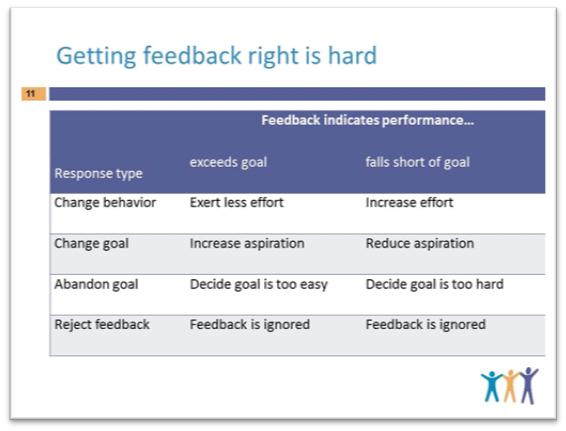Another year, another #NC11 Dylan Wiliams workshops and I can not recall a workshop where I didn’t leave with more questions than answers. I anticipate that this year will not be an exception.
Embedding formative assessment
Dylan has authored two professional development training packs for the SSAT with Siobhan Levy that support teachers in embedding formative assessment into their classrooms.
Assessment for Learning – What is it?
‘Why do we think we have done it, when we have not?’
It would appear that Assessment for Learning is still somewhat misunderstood, or given at least considered a box thats already been ticked. What is more concerning is that current feedback practices are rotting away student progress. 4b is not feedback, its data. Current grade, E, Predicted grade D is not feedback, it’s a learning thermostat. It’s not informative. Again, as per the last two workshops, the message is clear. Grades or levels is not feedback. Even worse grades negate any effort spent on writing comments.
What always impresses me most about these workshops is the conscious, yet polite way, Wiliams’ flips the securities of the room. Instantly reversing the years of experience of the teachers in the room by redefining their role as a student. Clearly, not a comfortable role for quite a few in the room. Wiliams not only communicates his philosophies by models them as well. A confident practitioner in his element.
From here, the post is more notes than a formal post as I really wanted to attend to the workshop.
Praise
There is a science to praise. Effective praise ‘praises work within the students control, sincere, credible, genuine, (slightly less than average).’
Focusing on improvement requires a different grading process. The plus, equals and minus grading system. Now the feedback experience promotes progress.
Feedback should be forward looking. Comment should be guiding, progressing and
Feedback should be more work for recipient than the donor.
Do you maximise your efforts to offer effective feedback? Ask yourself – in your teaching what proportion of your teaching feedback is acted upon and improved? 10%? 20%? 30%? 50%? Were you concerned by you own response?
Agency
Perhaps feedback is only part of the conundrum. Where is the responsibility for success? Attribution is key. The best learners believe it is down to them. Levels are not within a student’s control.
Getting Feedback Right is Difficult
Interesting feedback can ‘typically have eight outcomes, six are bad.’

This is simple slides emphasises just how challenging providing effective feedback is. It is nearly as difficult as setting the most appropriate activity to activate the learner, whilst ensuring that the learner believes they are in control and smart.
In case you were wondering
Assessment for Learning is the process of seeking and interpreting evidence for use by learners and their teachers to decide where the learners are in their learning, where they need to go and how best to get there (Broadfoot et al., 2002 pp. 2-3)
Assessment for learning is any assessment for which the first priority in its design and practice is to serve the purpose of promoting students’ learning. It thus differs from assessment designed primarily to serve the purposes of accountability, or of ranking, or of certifying competence. An assessment activity can help learning if it provides information that teachers and their students can use as feedback in assessing themselves and one another and in modifying the teaching and learning activities in which they are engaged. Such assessment becomes “formative assessment” when the evidence is actually used to adapt the teaching work to meet learning needs. (Black et al., 2004 p. 10)
Feedback should causing thinking.
DylanWiliams.net
[qr_code_display]
